新繽紛年代THE NEW SPLENDID AGE
| 项目状态 | 已完工 | |||
| 申报类别 | 室内设计 | |||
| 申报子类别 | 商业 | |||
| 完成日期 (YYYY-MM-DD) | 2020 - 12 - 31 | |||
| 设计周期 | 3 个月 | |||
| 项目面积 |
| |||
| 项目所在国家/地区 | 中国 | |||
| 项目所在省 | ||||
| 项目所在城市 | 上海市靜安區 | |||
| 项目简介(中文) | 17-18世紀歐洲沙龍聚會表現私人社交場域之極致,沙龍主人除了從穿著、談吐和客人名單襯托身份地位,也透過空間設計、陳列的收藏與招待的珍饈美饌,反映自己的修養與品味。這種富質感的交誼場景亦常見於中國,古代如書聖王羲之在〈蘭亭集序〉描述聚集群賢飲宴詠詩之幽情,現代則以十里洋場最能展現東西方薈萃的城市性格。一座照應各年齡層的私人招待會所,創空間以三首唐宋詩詞定調空間設計,精彩烘托三種文人意境。 | |||
| 项目简介(英文) | In the 17th-18th century, salon in Europe showed the acme of private social field. The salonnières not only set off their status by clothing, style of conversation and guest list, but also reflected their self-cultivation and taste through space design, collection display and the delicacies. This kind of elegant social scene was also common in China. In ancient times, Lantingji Xu, written by the sage of calligraphy Wang Xizhi, described the exquisite feelings of gathering talents to drink, feast and chant poems. In modern times, Shanghai as a metropolis infested by foreigners can best show the urban character of the East and the West. Allness Design designed a private reception hall for all ages with three Tang and Song Poems to set the tone of the space, which was highlighted by the three literati moods. | |||
| 宣传首图(横图) | 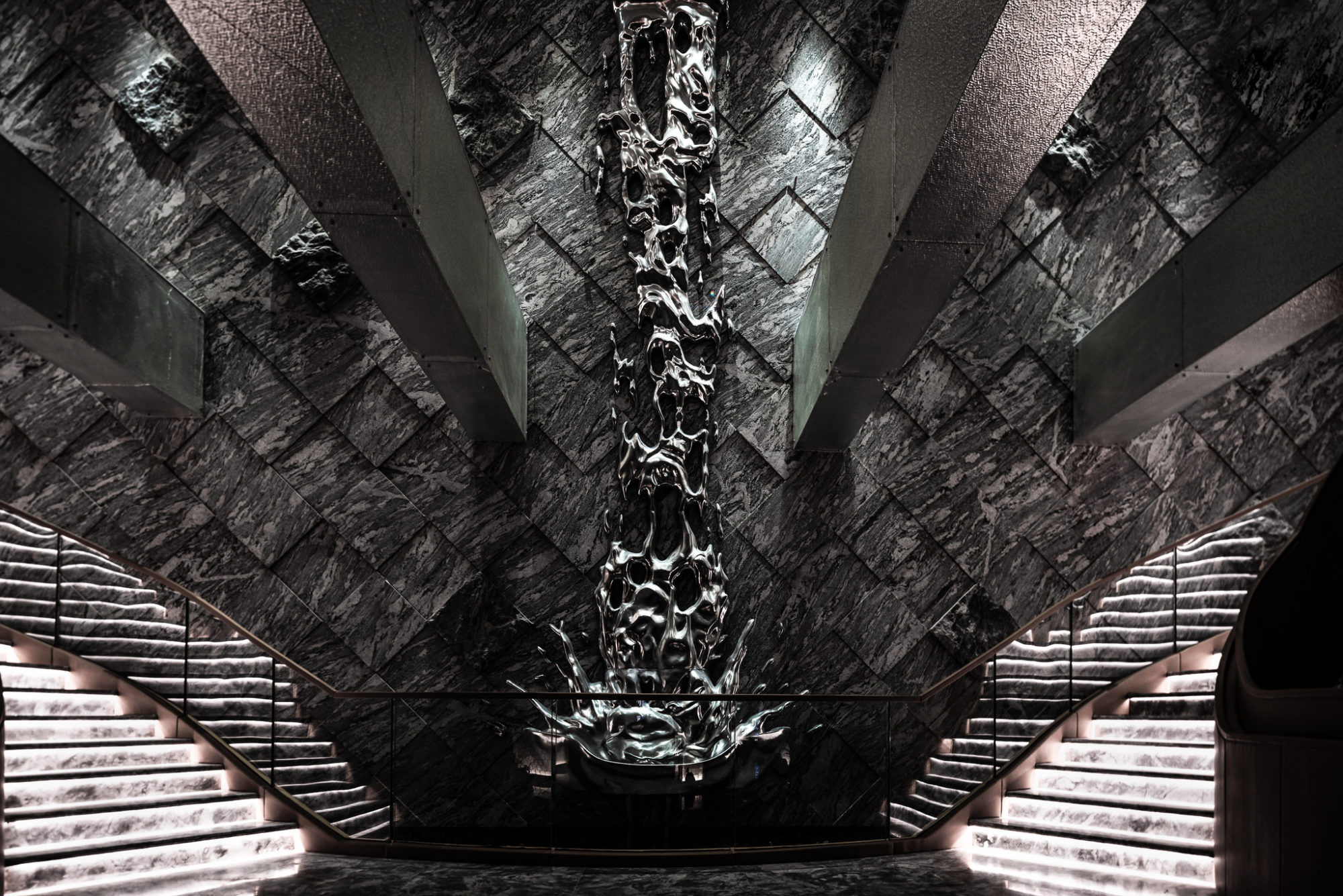 | |||
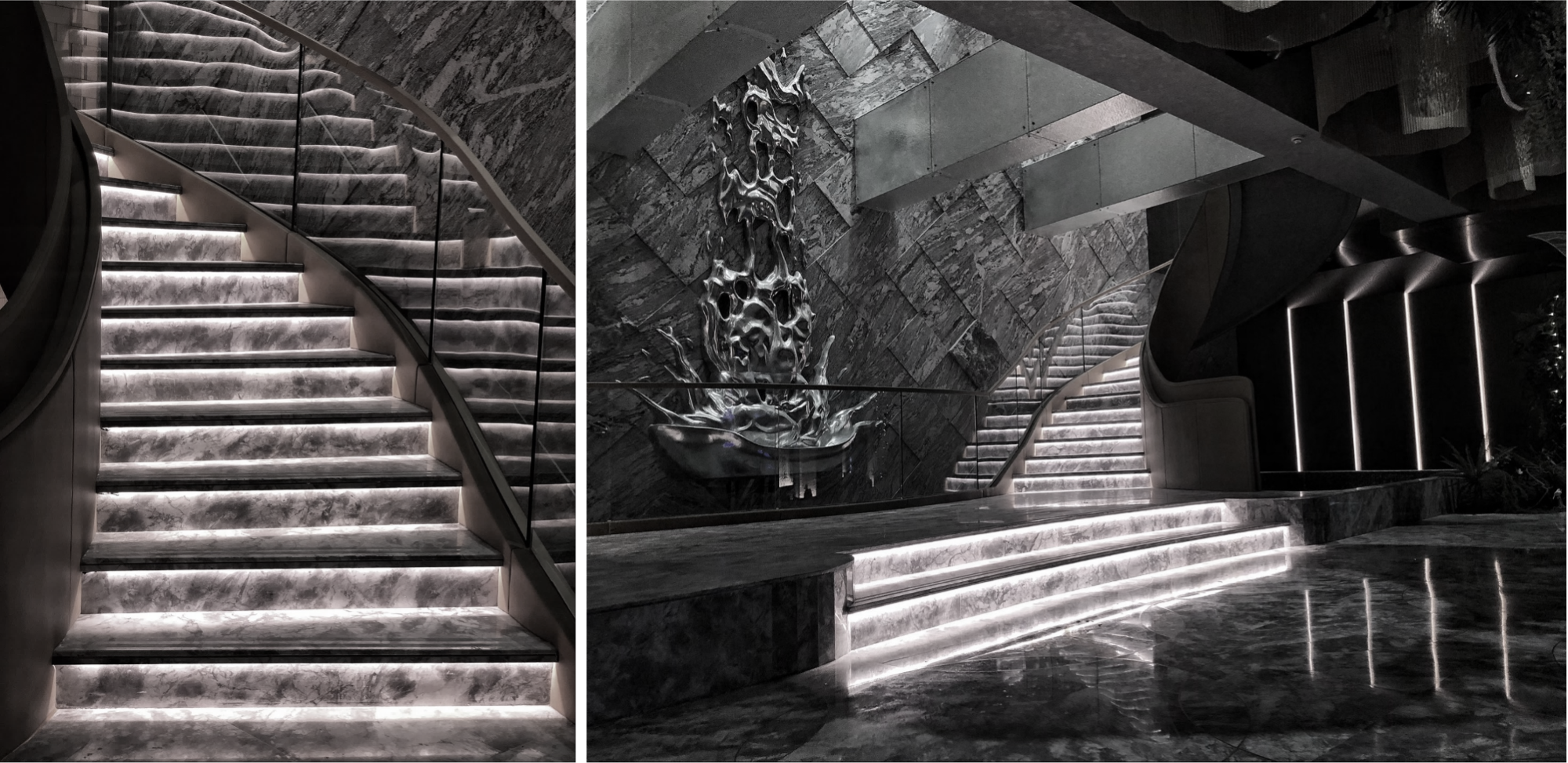 |
||||
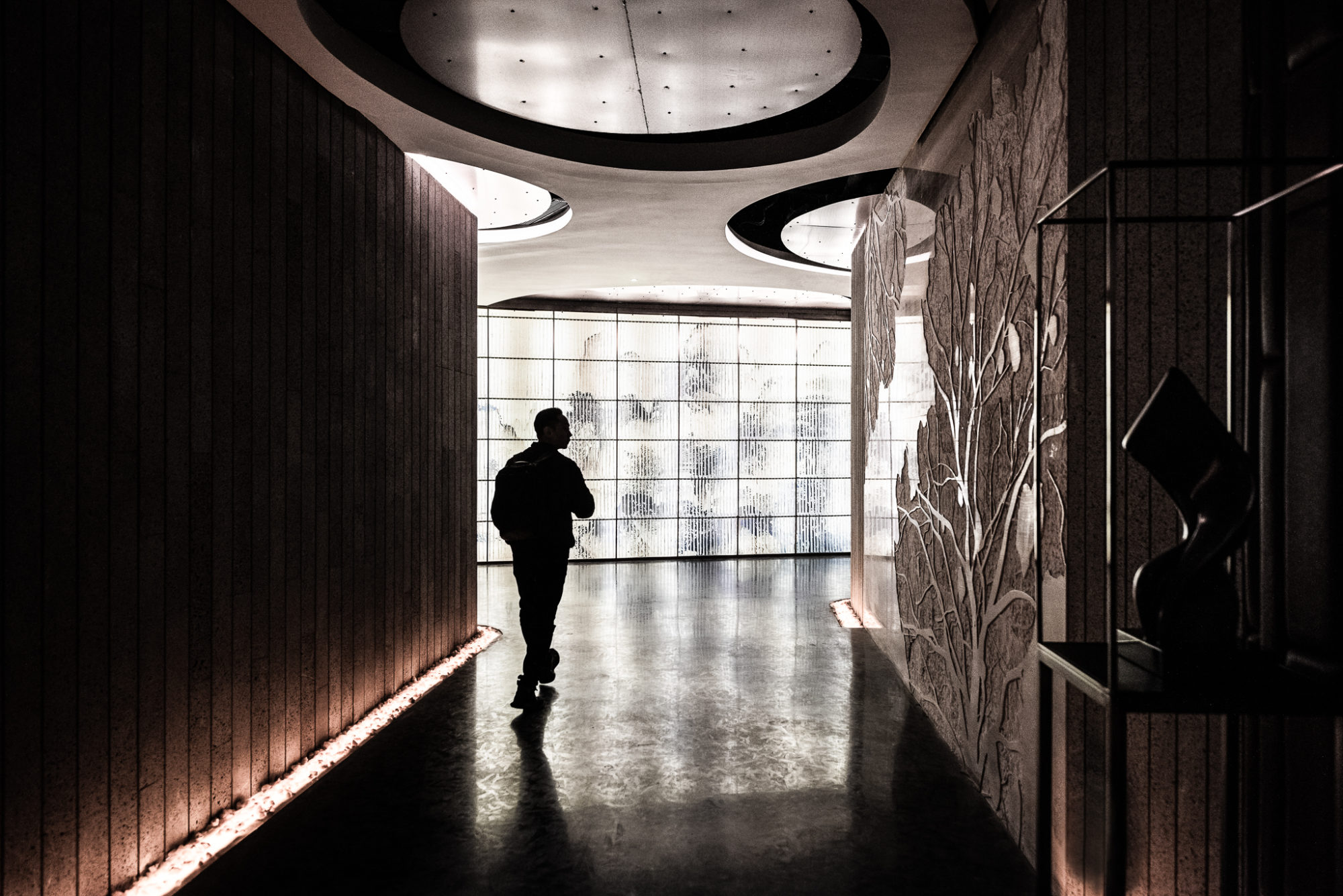 「隱」區定位為45歲以上的隱奢私域,位於建築最內側,配有獨立電梯,入口大廳位於中央,格局自左右開展。風格以李清照的〈點絳唇·蹴罷鞦韆〉為主題,詞作描述少女盪完鞦韆忽見客人來訪而害羞地躲起來偷覷賓客。轉化為空間時則強調「隱匿」與「隱約」,雙關曖昧的視線與內斂的情懷。本區以傢俱定義空間,例如在層架擺設琳瑯滿目的東方茶具,營造軟性隔間。走道採蜿蜒動線,使視線無法一眼看透,亦暗喻曲水流觴之文人雅興。貼牆的地面沿線點綴黃水晶,搭配間接採光演繹《易經》的「水火既濟」,譬況陰陽調和。天花板以純銅片刻印《清明上河圖》,木質牆面繪有潑墨山水畫,進一步醞釀東方書卷古韻。 The " Yin(隱)" area is positioned as a hidden luxury private area for the people over 45 years old. It is located at the innermost side of the building and is equipped with an independent elevator. The style is based on Li Qinzhao's poem "Rouged Lips" as the theme. The poem describes that the girl, after swinging on the swing, saw the visitor and shyly hid to peek the guest. When the idea is transformed into space, it emphasizes on "hiding" and "vagueness", ambiguity and introverted feelings. This area defines space with furniture, such as a variety of oriental tea sets on the shelves to create soft compartments. The aisle adopts a meandering line, making it impossible to see through at a glance, which is also a metaphor for the felling of floating wine cup pavilion of literati’s aesthetic mood. Citrine is dotted along the ground on the wall, and indirect lighting is used to interpret the "water and fire" as the harmony of yin and yang in I Ching. The ceiling is engraved with "Along the River During the Qingming Festival" in pure copper, and the wooden wall is painted with splashed ink landscape paintings, which further brews the oriental charm of ancient scrolls. |
||||
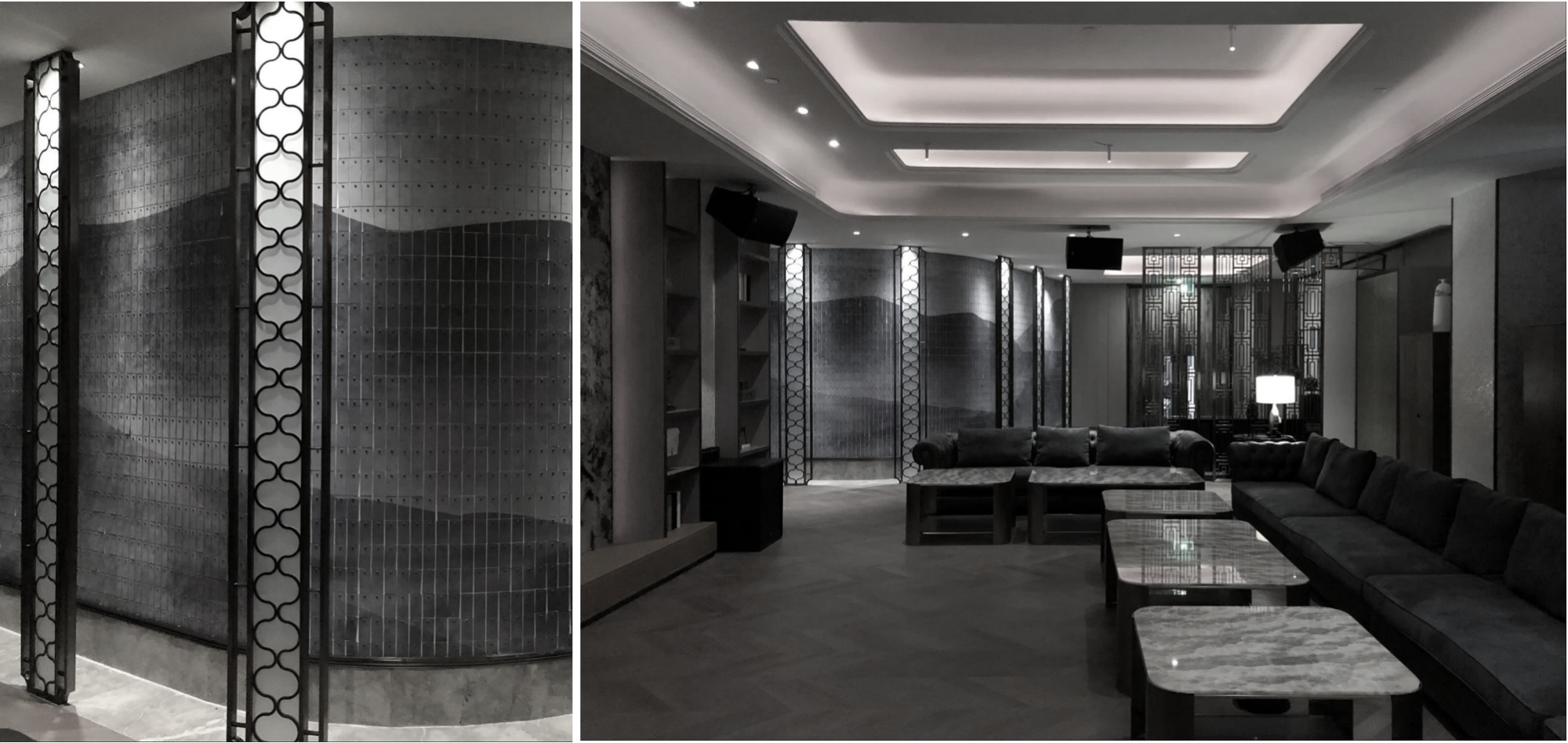 點絳唇·蹴罷鞦韆 慵蹴罷鞦韆,起來慵整纖纖手。露濃花瘦,薄汗輕衣透。 見客入來,襪剗金釵溜。和羞走,倚門迴首,卻把青梅嗅。 —— 宋代李清照 |
||||
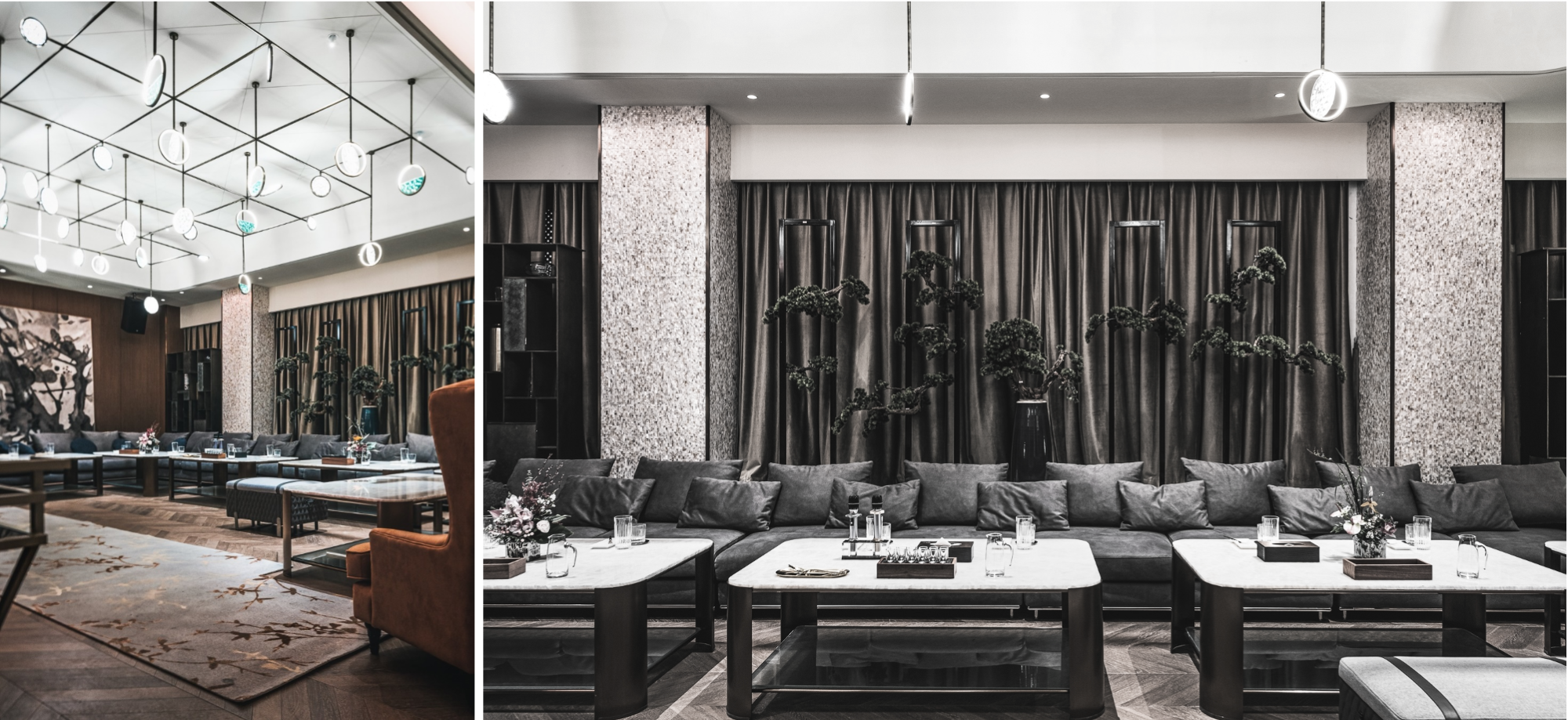 |
||||
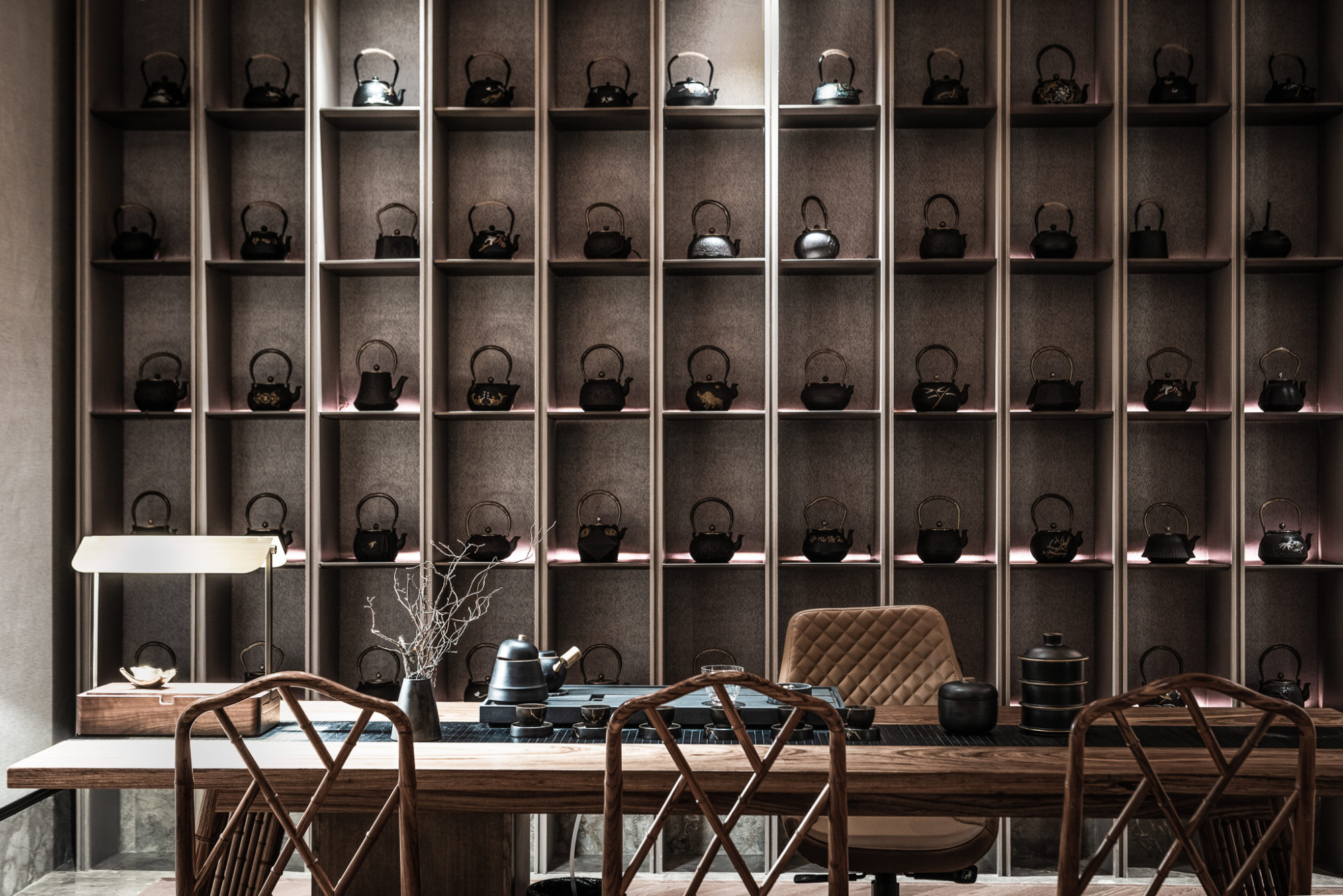 「文」區定位為35-45歲的豪奢商務空間,位於中央區塊,動線同樣配備獨立電梯,水平面設置電動門,可彈性調整格局大小。風格以蘇東坡的〈題西林壁〉為骨幹,本詩描述峰巒起伏的山勢,並以「不識廬山真面目」警惕世人轉換角度思考,方得不同的眼界。轉換成空間時則以材質堆疊與拱門、屏風等設計比擬「橫看成嶺側成峰」,藉此勉勵年輕企業主開闊人生格局。 The "Wen(文)" area is located in the central area of luxurious business space for the 35-45 year-old people. The moving line is also equipped with independent elevators, and the horizontal plane is equipped with electric doors, which can adjust the size of the space pattern flexibly. The style is based on Su Dongpo's " Written on the Wall at West Forest Temple". This poem describes the ups and downs of the mountains and uses " Of mountain Lu we cannot make out the true face " to remind the world to change its perspective, so as to gain different vision. When the poet is converted into space, it compares the stacking of materials with the design of arches, screens and so on with “It's a range viewed in face and peaks viewed from the side”, so as to encourage young entrepreneurs to broaden their vision of life. |
||||
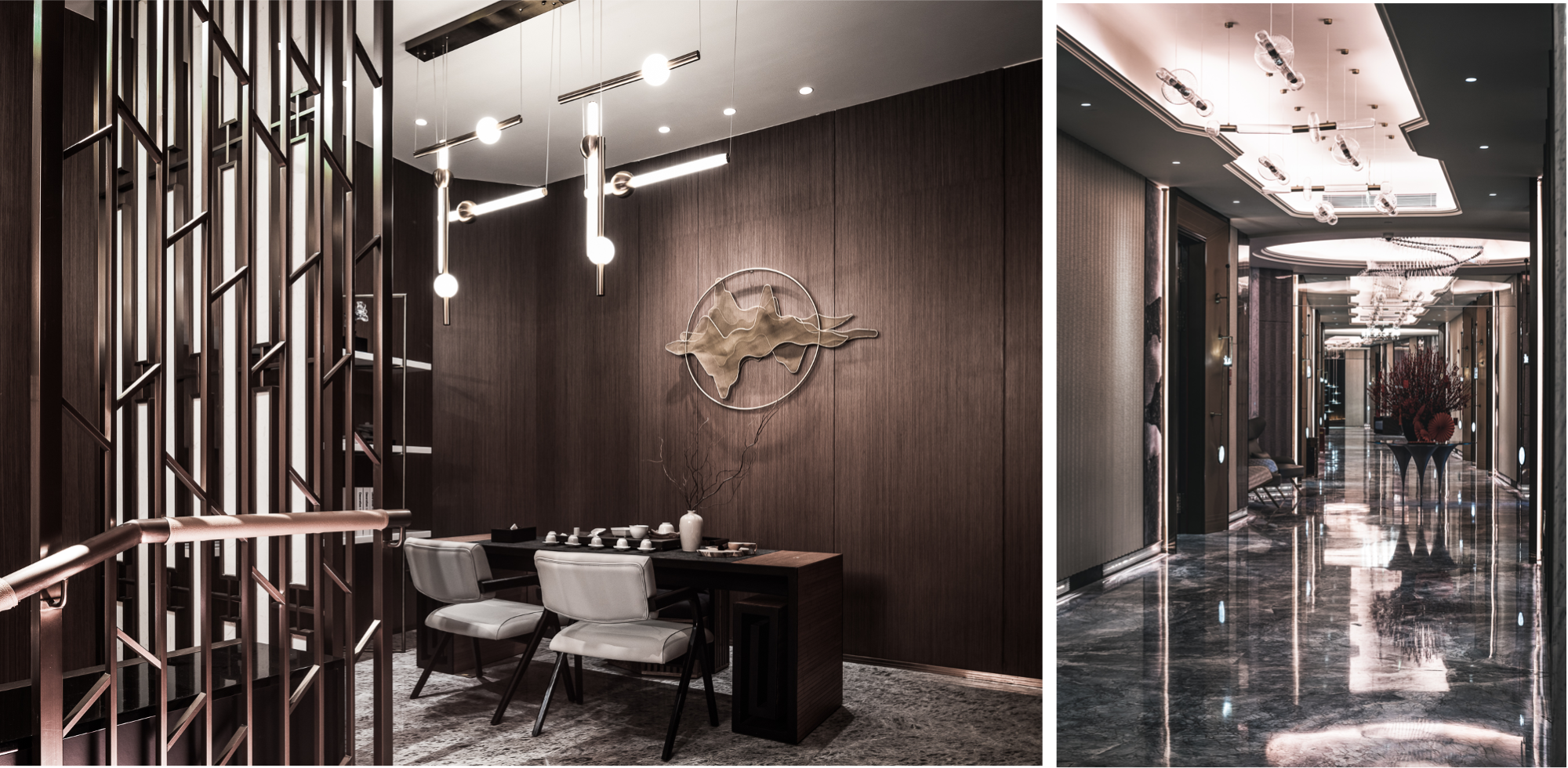 題西林壁 橫看成嶺側成峯,遠近高低各不同。不識廬山真面目,只緣身在此山中。 —— 宋代蘇軾 |
||||
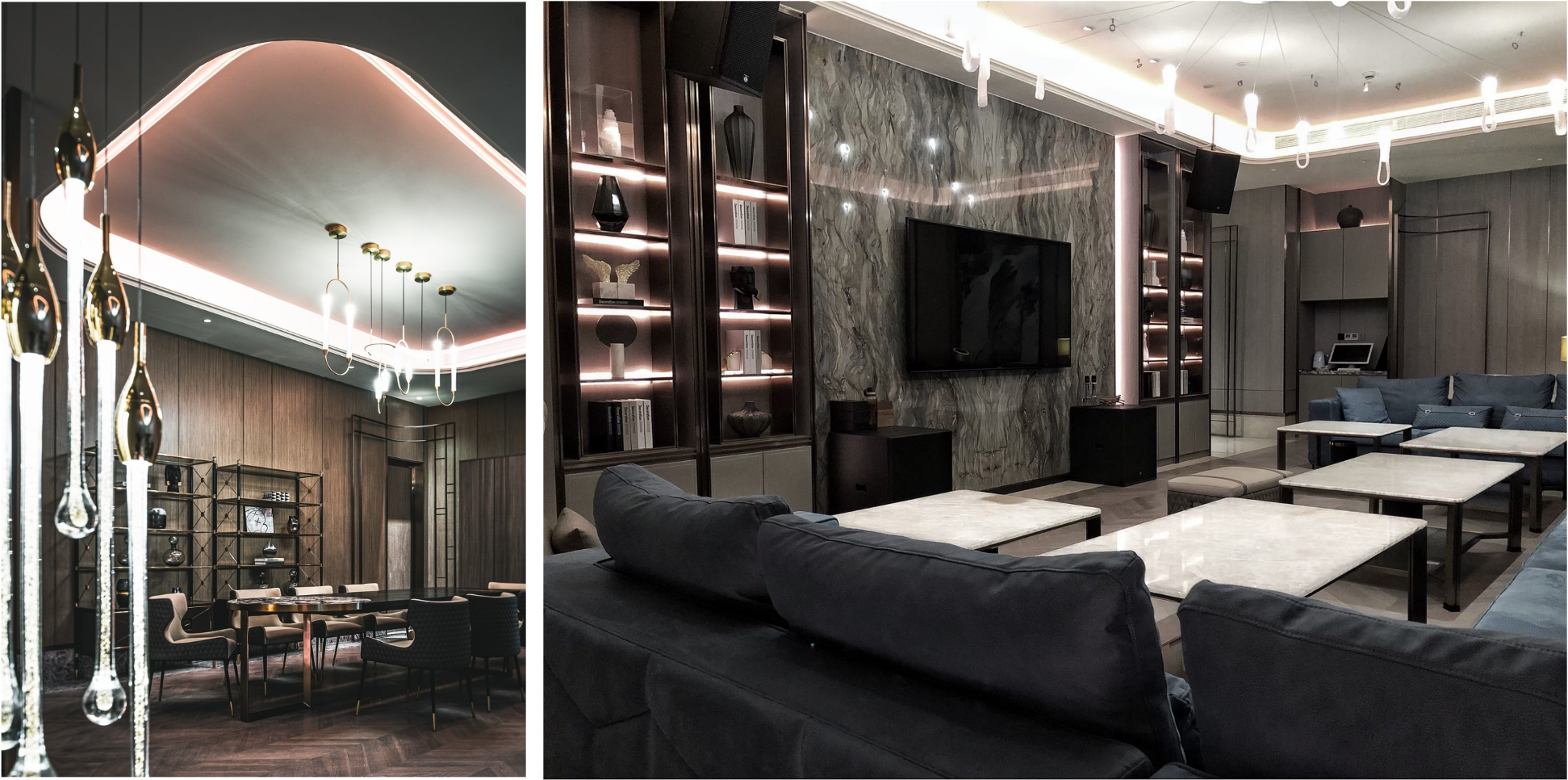 |
||||
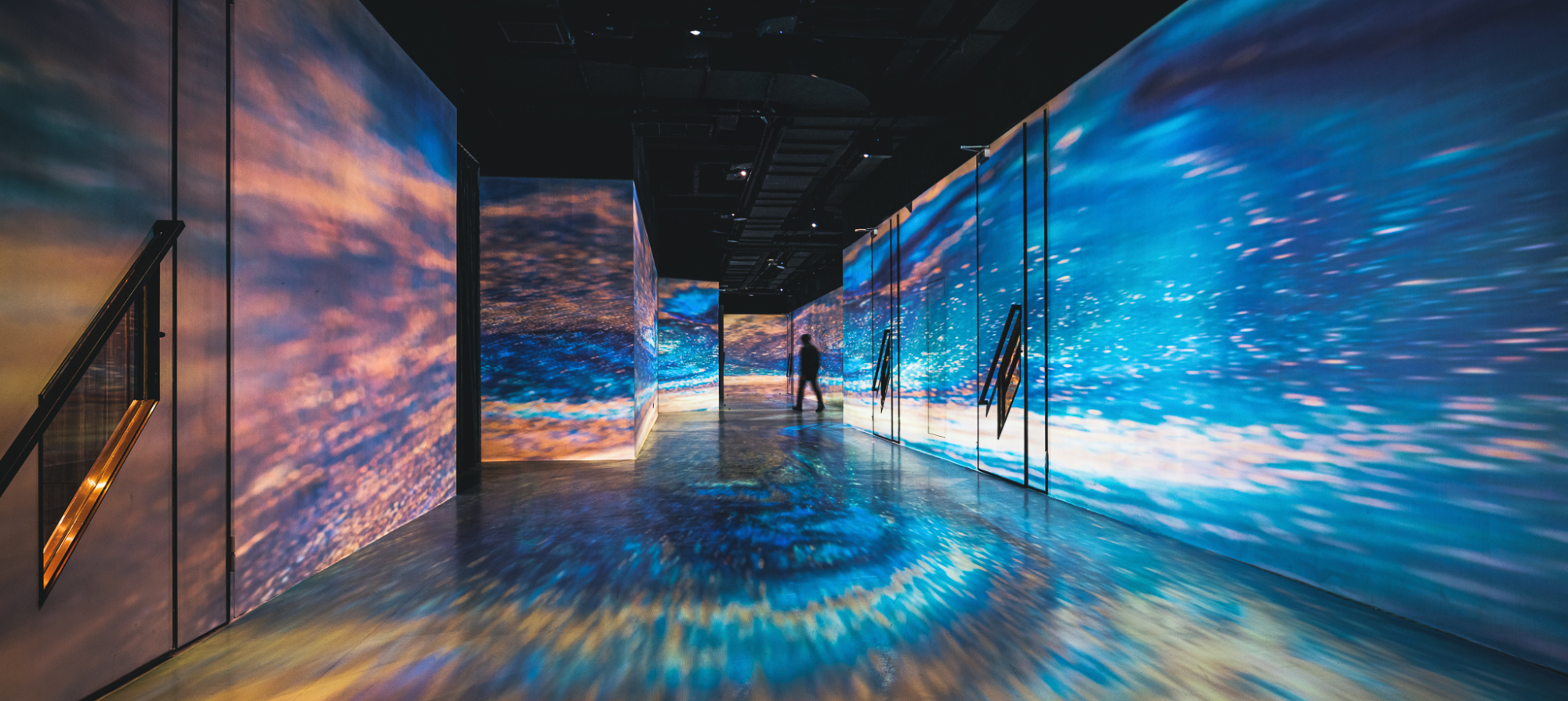 「潮」區定位為20-35歲的輕奢新世代娛樂空間,風格以詩仙李白的〈把酒問月〉為核心,本詩描述謫仙人夜間獨飲的孤苦思緒,接著跳脫當下、放眼古今的風流豪放。轉換成空間則以「沈浸式設計」營造水月幻影,大廳有雙迴旋大理石樓梯,以間接採光烘托浪漫月夜氛圍,並擺設名家打造的瀑布意象不鏽鋼藝術品,奠定壯闊氣勢。走廊區大範圍設置投影設備,可週期性替換主題內容,展示最新潮流科技。叛逆的不對稱傢俱配置與解構的線條設計,則呼應跳脫傳統的新鮮潮流。 The " Chao(潮)" area is positioned as a light luxury new generation entertainment space for the 20-35 year-old people. The style is centered on Li Bai’s “ Ask the Moon With a Cup of Wine in Hand”. This poem describes the lonely and bitter thoughts of the exiled one who drink alone at night, and then was set free from the present. The space is transformed into an “ immersive design “ to create the illusion of water and moon. |
||||
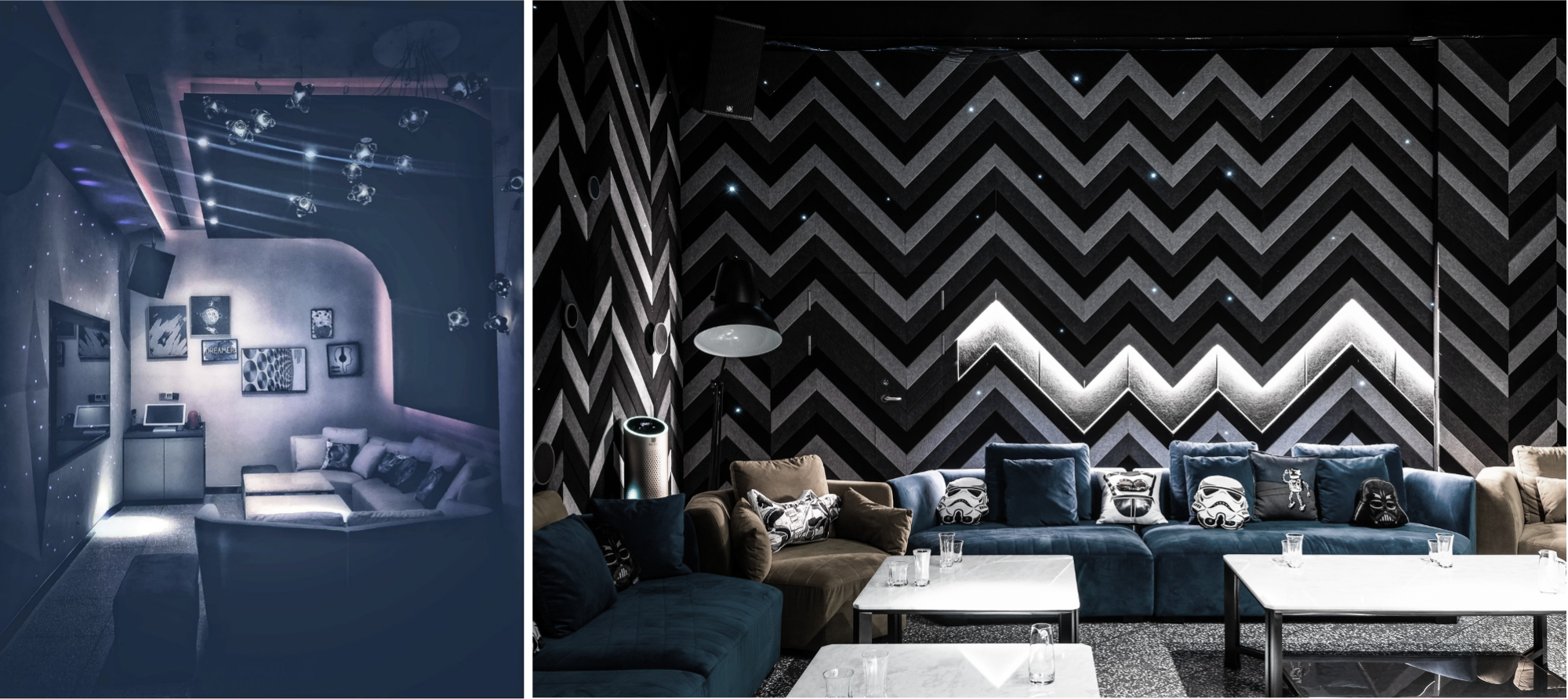 把酒問月·故人賈淳令予問之 青天有月來幾時?我今停杯一問之。人攀明月不可得,月行卻與人相隨。 皎如飛鏡臨丹闕,綠煙滅盡清輝發。但見宵從海上來,寧知曉向雲間沒。 白兔搗藥秋復春,嫦娥孤棲與誰鄰?今人不見古時月,今月曾經照古人。 古人今人若流水,共看明月皆如此。唯願當歌對酒時,月光長照金樽里。 —— 唐代李白 |
||||
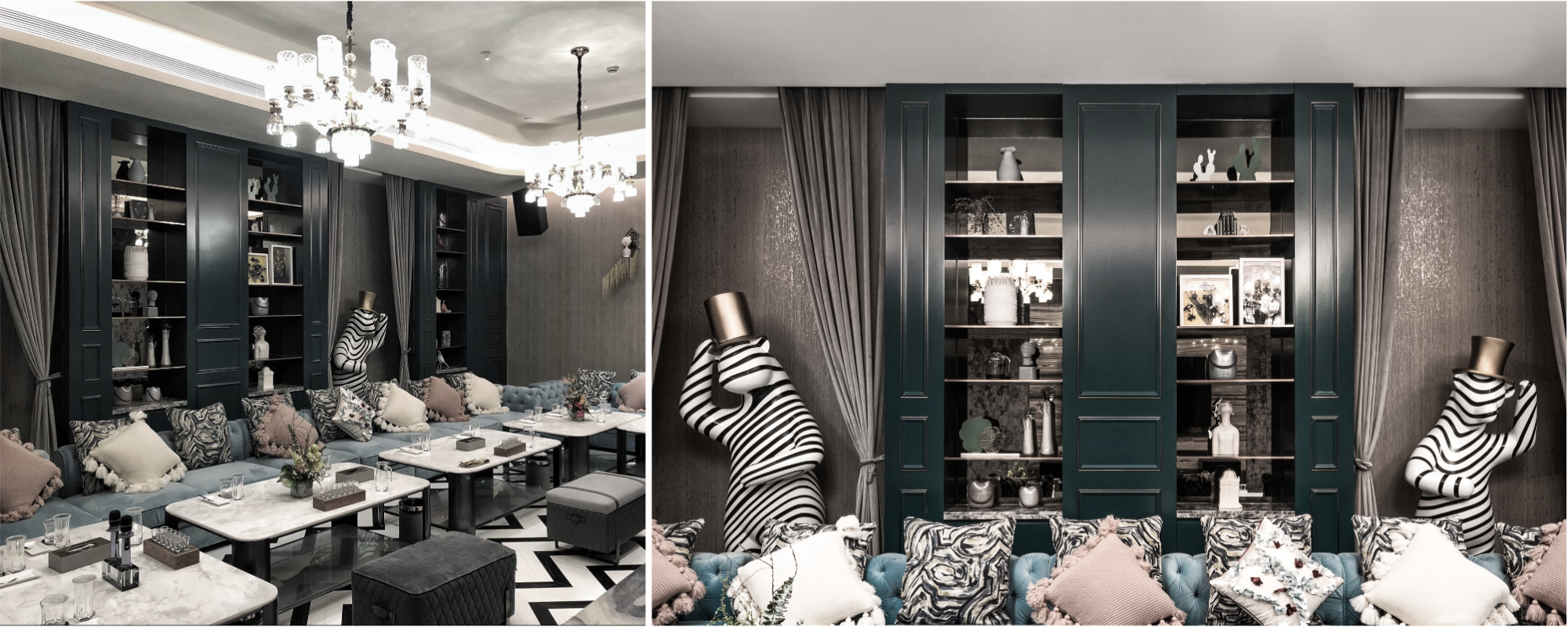 |
||||
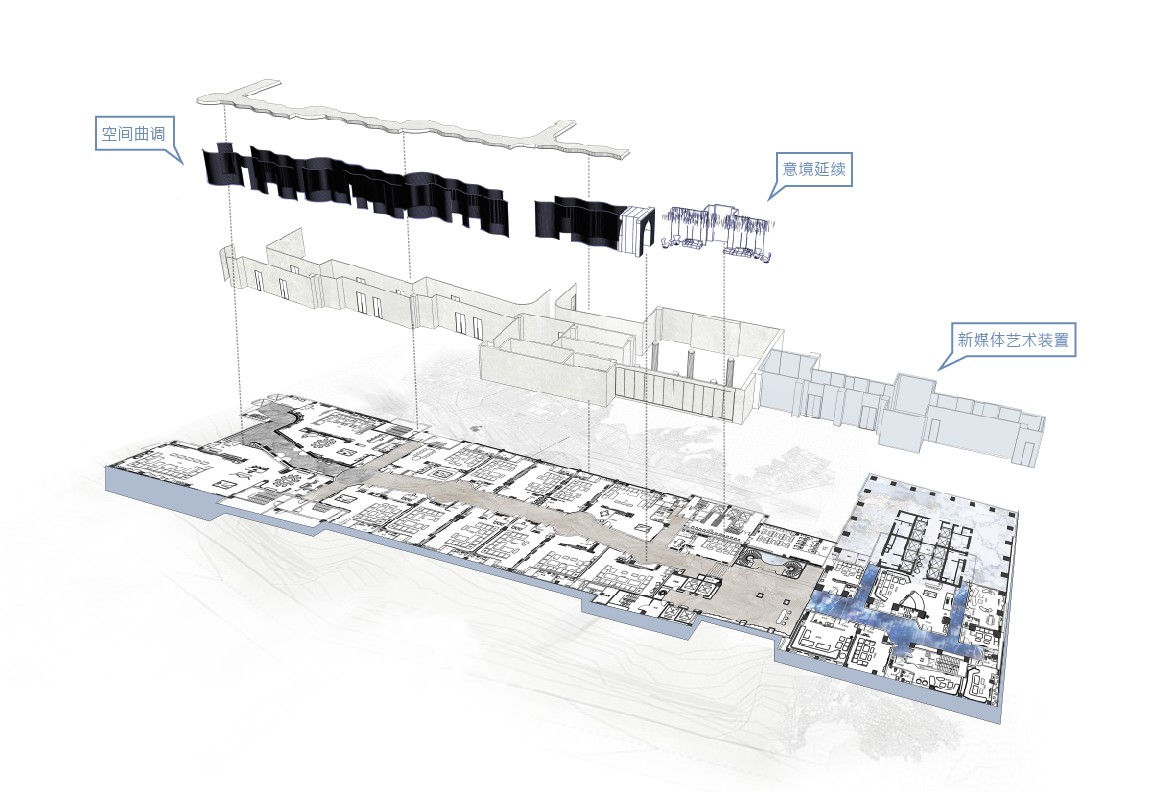 |
||||
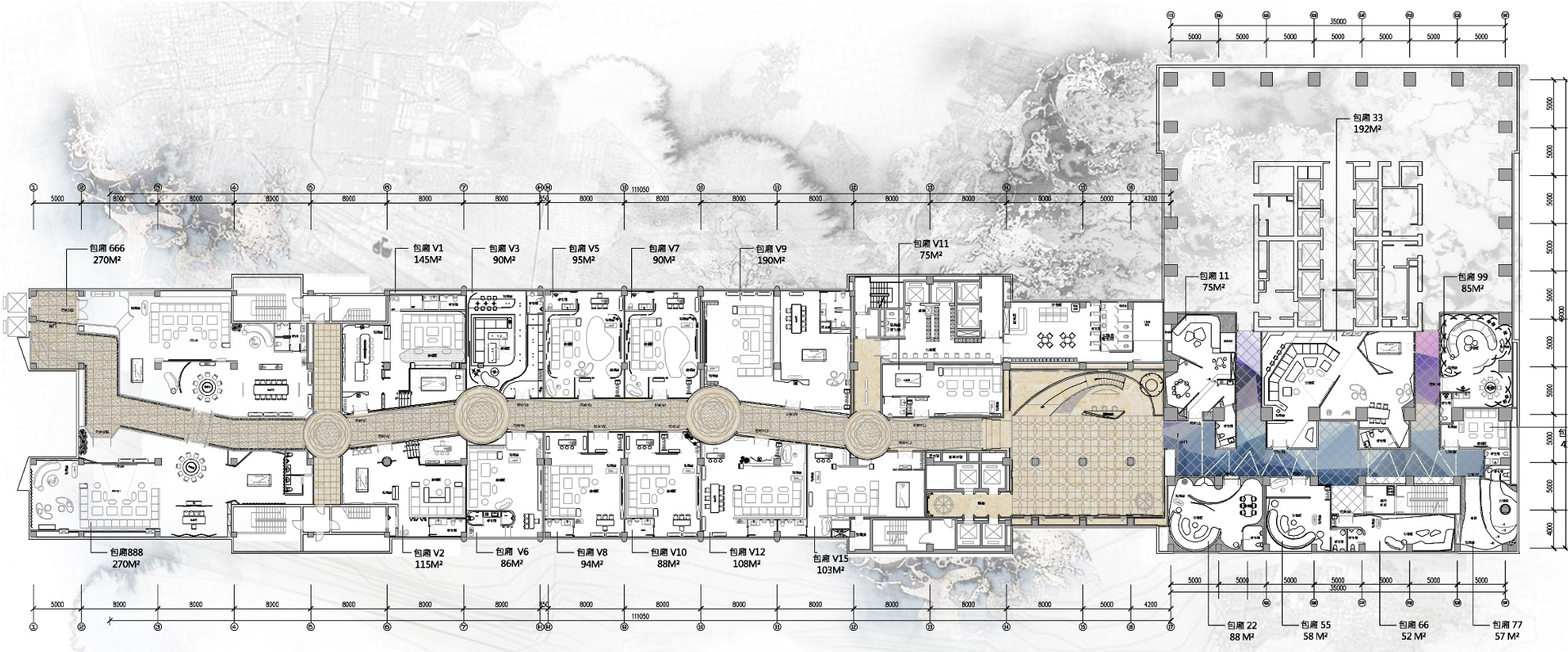 |
||||
| 项目视频 | ||||
